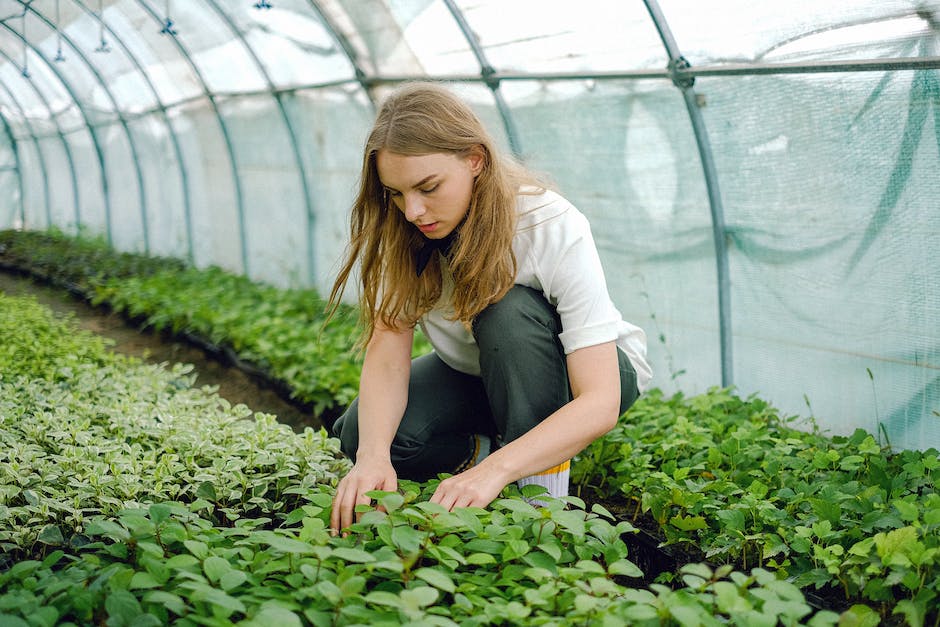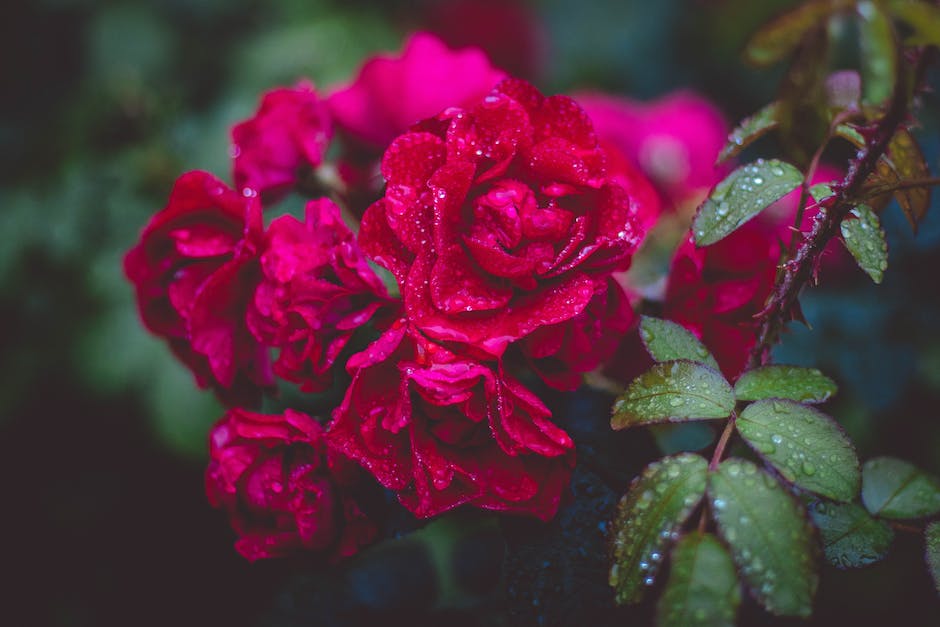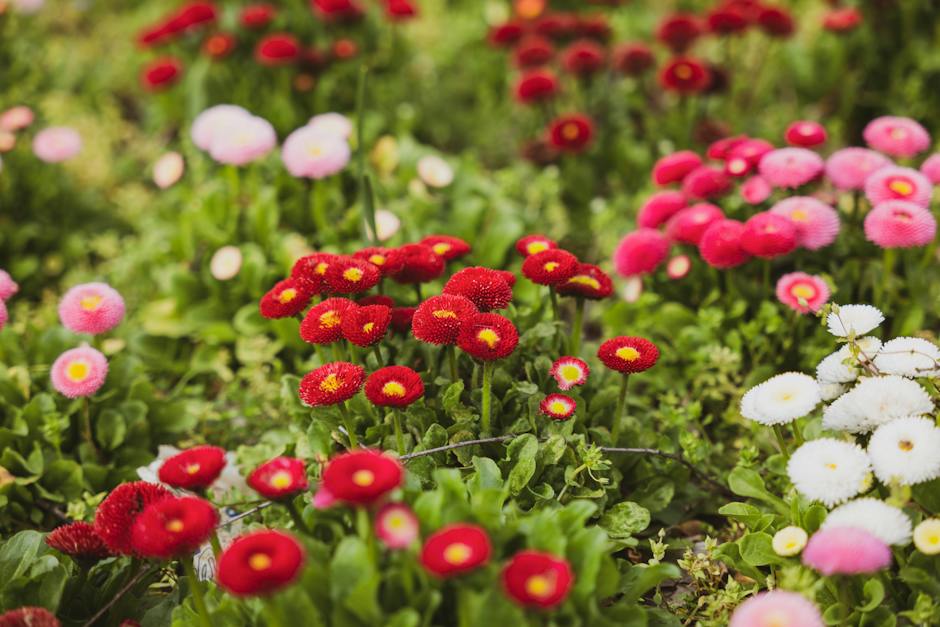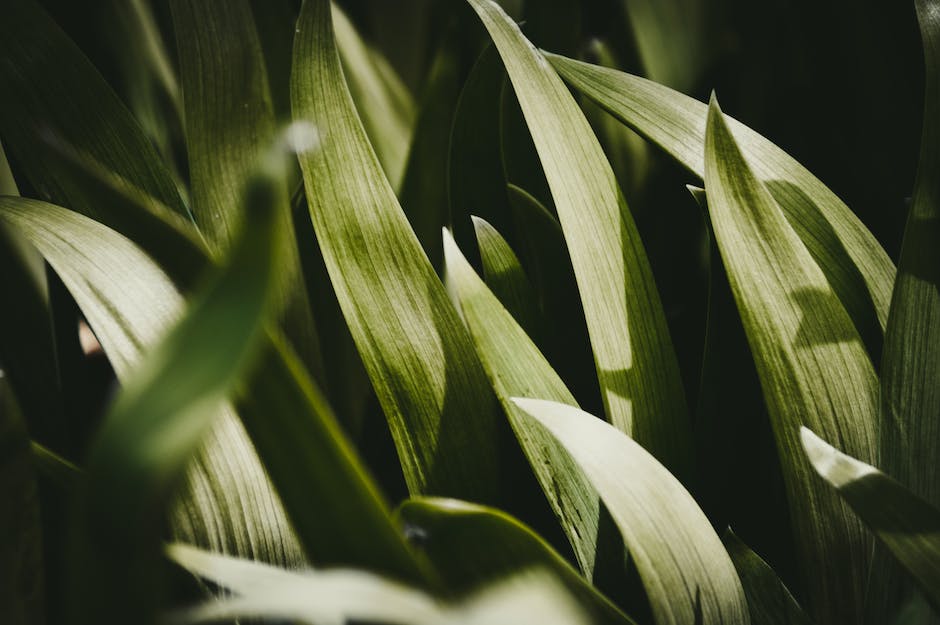Water-Wise Gardening: Growing Hydroponic Drought-Tolerant Plants
As more regions around the world face water scarcity and growing concerns about environmental sustainability, the need for water-wise gardening practices becomes increasingly important. One innovative approach to reduce water usage while maintaining a lush and thriving garden is through hydroponic gardening.
Hydroponics is a soilless gardening method that enables plants to grow in nutrient-rich solutions, providing them with optimal conditions for growth and development. Unlike traditional gardening, hydroponics minimizes water wastage by directly delivering water to the plant’s roots, ensuring efficient water uptake and reducing evaporation.
In addition to conserving water, hydroponic gardening also offers the advantage of being able to grow plants in areas where soil quality may be poor or inadequate, such as urban environments or areas with nutrient-deficient soils. By bypassing the need for soil altogether, hydroponic gardening allows for precise control over nutrient levels, pH balance, and environmental conditions, resulting in healthier plants and increased crop yields.
Moreover, hydroponic gardening is particularly well-suited for growing drought-tolerant plants. These plants are adapted to survive in arid conditions and require less water compared to traditional garden plants. By combining hydroponics with drought-tolerant plant species, you can create a thriving, water-efficient garden that not only conserves resources but also promotes sustainability and resilience in the face of changing climate patterns.
In this blog post, we will explore the fascinating world of water-wise gardening through hydroponics. We will delve into the benefits, techniques, and considerations involved in growing drought-tolerant plants using this innovative gardening method. By the end, you will have a comprehensive understanding of how to create your own hydroponic garden and contribute to conserving water while still cultivating a flourishing and beautiful oasis.
Explanation of hydroponic gardening and its benefits in drought-prone areas (such as saving water and space)

Hydroponic gardening is a method of growing plants without the use of soil. Instead, nutrient-rich water is used as the growing medium, providing plants with everything they need to thrive. This innovative gardening technique offers numerous benefits, particularly for those living in drought-prone areas.
One of the most significant advantages of hydroponic gardening in areas facing water scarcity is its water-saving capabilities. Traditional soil-based gardening requires a significant amount of water, with much of it being lost through evaporation, runoff, or being absorbed by the soil. In hydroponic systems, water is recirculated and reused, resulting in up to 90% less water consumption compared to traditional gardening methods. This efficient use of water is crucial for areas where every drop counts.
Another notable benefit is space efficiency. In hydroponic gardening, plants are grown vertically, allowing for maximum use of available space. This is particularly advantageous in urban areas where space is limited, as hydroponic systems can be set up in small areas such as balconies or rooftops. By utilizing vertical space effectively, hydroponics enables individuals to grow a considerable amount of plants within a compact footprint.
Furthermore, hydroponic gardening also eliminates the need for pesticides and herbicides. Since the plants are grown in a controlled environment, pests and diseases are less likely to infest the garden. Consequently, the reliance on potentially harmful chemicals is significantly reduced, making hydroponics not only water-wise but also environmentally-friendly.
In addition to these benefits, hydroponic gardening allows for year-round cultivation, regardless of seasonal limitations or adverse weather conditions. By providing plants with optimal growing conditions consistently, hydroponic systems create a controlled environment that maximizes plant growth and productivity, even in drought-prone areas where water availability is limited.
In conclusion, hydroponic gardening offers a host of advantages for individuals living in drought-prone areas. Its ability to save water, maximize space utilization, eliminate chemical usage, and provide year-round cultivation make it an excellent choice for those looking to make their gardens more sustainable. Consider exploring hydroponics as a viable solution for growing drought-tolerant plants while minimizing water consumption and maximizing productivity.
Introduction to drought-tolerant plants and their characteristics (ability to survive with minimal water)

Drought-tolerant plants, also known as xerophytes, are perfect additions to any water-wise garden. These plants possess unique characteristics that enable them to survive and thrive with minimal water requirements. In regions experiencing water scarcity or frequent dry periods, cultivating drought-tolerant plants is both practical and environmentally responsible.
One of the main traits of drought-tolerant plants is their ability to adapt to arid conditions by conserving water efficiently. They have evolved various mechanisms to reduce water loss through specialized leaves and stems. Many of these plants possess thick, waxy cuticles on their leaves, which act as a protective barrier, reducing water evaporation. Some species also feature reduced leaf surfaces or needle-like foliage to further limit transpiration.
Moreover, drought-tolerant plants have well-developed root systems that allow them to seek out water deep within the soil. These root systems typically extend far beyond the plant’s above-ground reach, ensuring efficient water uptake from deeper soil layers. Some plants even have specialized root structures, such as taproots or fibrous roots, which enhance water absorption and storage capabilities.
Additionally, these plants often display adaptations that help them conserve water during periods of drought or limited irrigation. They may undergo dormancy or shed leaves to minimize water loss and preserve energy. Some species have mechanisms to store water within their leaves, stems, or specialized tissue, ensuring a reserve during dry spells.
Drought-tolerant plants are not only resilient in water-scarce conditions but also possess exceptional adaptation strategies to endure extreme temperature variations. Their hardy nature allows them to survive in climates with high temperatures, low humidity, and intense sunlight.
By incorporating drought-tolerant plants into your garden, you are not only reducing water usage but also promoting sustainable landscaping practices. These plant choices can evoke a striking visual appeal, with their unique textures, shapes, and vibrant colors. From succulents and cacti to ornamental grasses and Mediterranean herbs, the options for drought-tolerant plants are diverse and offer endless possibilities to create an eye-catching and environmentally conscious garden.
In the following sections of this blog post, we will delve into specific drought-tolerant plant choices suitable for hydroponic gardening, explore their growth requirements, and provide essential tips for successful cultivation. Stay tuned to discover how you can embrace water-wise gardening practices and enjoy the beauty and benefits of growing hydroponic drought-tolerant plants.
Selecting the right hydroponic system for growing drought-tolerant plants

When it comes to water-wise gardening, selecting the right hydroponic system plays a crucial role in effectively growing drought-tolerant plants. Hydroponics, a method of growing plants without soil, offers numerous advantages in minimizing water usage while maximizing plant growth. To ensure optimal results, consider the following factors when choosing the hydroponic system for your drought-tolerant plant garden:
1. Drip Irrigation Systems: Drip irrigation systems are a popular choice for hydroponic gardening as they deliver water directly to the plant’s roots. These systems work by slowly dripping water onto the growing medium, allowing plants to absorb water efficiently. With adjustable drip rates, you can fine-tune your system to match the specific needs of drought-tolerant plants, preventing wastage and promoting optimal growth.
2. Nutrient Film Technique (NFT) Systems: NFT systems are another excellent choice for water-wise gardening. In these systems, a thin film of nutrient-rich water continuously flows over the plant roots, providing them with a consistent supply of water and nutrients. NFT systems are known for their efficient water usage, as the constant flow prevents water stagnation and reduces the risk of water loss due to evaporation. They are particularly suitable for growing plants with shallow root systems, such as lettuce or herbs, which are often drought-tolerant.
3. Ebb and Flow Systems: Ebb and flow systems, also known as flood and drain systems, are versatile and efficient for growing drought-tolerant plants hydroponically. In these systems, the plants’ roots are flooded with nutrient-rich water periodically, allowing them to absorb the required moisture before draining away. Ebb and flow systems can be adjusted to flood the root zone only when necessary, reducing water waste and ensuring plants receive water exactly when needed. This method is ideal for plants that prefer drier conditions and can thrive in periodic watering.
4. Aeroponics Systems: Aeroponics is an advanced hydroponic technique that minimizes water usage by misting the plant’s roots with a nutrient-rich solution. This system relies on a fine mist sprayed directly onto the plant roots, providing essential nutrients and water in a highly efficient manner. Aeroponics allows for precise control of both water and nutrient delivery, reducing wastage and promoting healthy growth in drought-tolerant plants.
5. Consider Plant Needs: Before selecting a hydroponic system, it is crucial to understand the specific water requirements of the drought-tolerant plants you intend to grow. Some plants are well-adapted to arid conditions and may require less water, while others may have different preferences. By researching and considering the water needs of your chosen plants, you can select a hydroponic system that provides the appropriate moisture levels, ensuring their successful growth.
In conclusion, choosing the right hydroponic system is essential for water-wise gardening and successfully growing drought-tolerant plants. Drip irrigation systems, nutrient film technique (NFT) systems, ebb and flow systems, and aeroponics systems offer different approaches to conserving water while meeting the needs of these plants. By selecting the most suitable hydroponic system and understanding the specific water requirements of your chosen plants, you can create an efficient and sustainable garden that maximizes water usage while cultivating thriving drought-tolerant plants.
Choosing the appropriate growing medium for hydroponic gardening

When it comes to hydroponic gardening, choosing the right growing medium is crucial for the successful growth of drought-tolerant plants. The growing medium serves as a substitute for soil, providing support to the plants’ roots and holding moisture and nutrients in the hydroponic system.
Several factors need to be considered when selecting the appropriate medium for your hydroponic garden. Firstly, it is important to choose a medium that has excellent water retention properties. Drought-tolerant plants thrive in environments where water is efficiently utilized, so selecting a medium that can hold and distribute moisture evenly is essential.
One popular choice for hydroponic gardening is coconut coir. Made from the husks of coconuts, this medium is not only environmentally friendly but also has excellent water retention capabilities. Coconut coir retains a significant amount of water while still allowing for proper aeration of the plant’s roots.
Rockwool is another commonly used growing medium in hydroponics. Made from molten rock or slag, it is sterile and pH neutral, making it ideal for maintaining a healthy growing environment for drought-tolerant plants. Rockwool offers good water retention properties while also providing adequate drainage to prevent waterlogging.
For those seeking a more natural option, perlite and vermiculite can be used as growing mediums. Both perlite and vermiculite are lightweight and have excellent water retention abilities. These mediums allow for increased aeration and drainage, reducing the risk of overwatering while still providing sufficient moisture to the plants.
Another popular choice is clay pebbles, also referred to as expanded clay or hydroton. These porous pebbles promote a well-drained root system while retaining moisture efficiently. Clay pebbles are reusable and can be easily cleaned, making them a sustainable choice for hydroponic gardeners.
Before selecting a growing medium, it is crucial to consider the specific requirements of the drought-tolerant plants you plan to grow. Some plants prefer a more moisture-retentive medium, while others thrive in well-drained soils. Additionally, pH levels should be taken into account since some mediums may affect the overall acidity or alkalinity of the nutrient solution.
Choosing the appropriate growing medium is just one piece of the puzzle when it comes to successful water-wise gardening in a hydroponic system. By carefully considering the water retention and drainage properties of the medium, you can create an optimal environment for your drought-tolerant plants, promoting their growth and ensuring their survival even in water-scarce conditions.
Understanding the water requirements of different drought-tolerant plants and adjusting the nutrient solution accordingly
Water is a precious resource, especially during times of drought. When it comes to gardening, understanding the water requirements of different drought-tolerant plants is crucial for their success in a hydroponic system. Unlike traditional soil-based gardening, where plants can rely on the soil’s moisture retention, hydroponics requires us to provide plants with the right amount of water and nutrients directly. This section will guide you on understanding the water needs of drought-tolerant plants and how to adjust the nutrient solution accordingly.
Drought-tolerant plants are those that have adapted to survive in arid or semi-arid regions where water availability is limited. These plants have unique characteristics that enable them to cope with less water. However, it is important to note that even though these plants are drought-tolerant, they still require a certain amount of water to grow and thrive. In hydroponics, we have more control over the water supply, which allows us to cater to the specific needs of these plants.
To adjust the nutrient solution for drought-tolerant plants, it is essential to understand their water requirements at different stages of growth. During the germination and early growth phase, these plants need more moisture to establish their root systems. However, as they mature, their water requirements decrease. Adjusting the nutrient solution means providing the right balance of water and nutrients to support their growth without overwatering them.
Monitoring the moisture content of the growing medium is crucial for growing drought-tolerant plants in a hydroponic system. Using sensors or manual checks, ensure that the medium is not too dry or too saturated. Aim for a moist but not waterlogged environment to promote healthy root growth. Adjusting the watering schedule and nutrient solution concentration based on the water content of the medium will help maintain the ideal moisture level for the plants.
When adjusting the nutrient solution for drought-tolerant plants, consider using a more diluted solution compared to plants that require more water. Drought-tolerant plants are typically less tolerant of excessive nutrients, so it’s important to provide them with a balanced and appropriately diluted nutrient solution. Pay attention to the specific nutrient requirements of each plant species and adjust accordingly to avoid nutrient imbalances that may hinder their growth.
In addition to adjusting the nutrient solution, other water-wise practices can be implemented in hydroponic systems. Implementing measures such as recirculating water, using water-saving techniques like a drip irrigation system, or capturing and reusing rainwater can help minimize water consumption while still providing the necessary moisture for your drought-tolerant plants.
By understanding the water requirements of drought-tolerant plants and adjusting the nutrient solution accordingly, you can successfully grow these water-wise plants in a hydroponic system. Not only will you conserve water, but you will also contribute to a more sustainable and environmentally friendly gardening practice. Ensure that you stay informed about the unique needs of each plant species and regularly monitor their moisture levels to optimize their growth and productivity.
Tips for creating an optimal hydroponic environment for water-wise gardening (proper lighting, temperature, and humidity control)

Hydroponic gardening allows us to cultivate plants without soil, making it an ideal method for growing drought-tolerant plants in a water-wise manner. To ensure the success of your hydroponic garden and maximize water efficiency, it is crucial to create an optimal environment for your plants. This involves careful attention to lighting, temperature, and humidity control.
1. Lighting:
Proper lighting is essential for photosynthesis, the process through which plants convert light into energy. For hydroponic gardening, using LED grow lights is highly recommended. LED lights are energy-efficient, emit minimal heat, and can be customized to provide the ideal light spectrum for plant growth. By using LED lights, you can ensure that your plants receive the necessary light intensity and wavelength, resulting in healthier and more productive crops. Remember to position the lights at an appropriate distance from the plants, as each plant species has different light requirements.
2. Temperature Control:
Maintaining the optimal temperature range is crucial for the success of your hydroponic garden. Most plants thrive in temperatures ranging from 65°F to 75°F (18°C to 24°C). To regulate the temperature, you can use a combination of air conditioners, fans, and heaters as needed. It’s important to monitor the temperature regularly and make adjustments accordingly to avoid any stress or damage to your plants. Implementing a temperature control system will not only support optimal plant growth but also contribute to water conservation by preventing excessive evaporation.
3. Humidity Management:
Humidity plays a vital role in hydroponic gardening, as it affects the transpiration rate of plants and influences nutrient uptake. The ideal humidity range for most plants in a hydroponic system is around 50% to 70%. To maintain the desired humidity level, consider using a humidifier or dehumidifier, depending on your local climate conditions. Adequate airflow through the use of fans or ventilation systems can also help to manage humidity levels effectively. Monitoring and adjusting the humidity within the optimal range will help prevent water loss due to excessive transpiration and maintain the overall health of your water-wise plants.
Ensuring proper lighting, temperature, and humidity control in your hydroponic garden will help create an optimal environment for water-wise gardening. By implementing these tips, you can maximize your water efficiency and grow drought-tolerant plants successfully.
Maintenance and care guidelines for drought-tolerant plants in hydroponic systems (pruning, pest control, etc.)

In order to maintain healthy and thriving drought-tolerant plants in your hydroponic system, it is essential to follow proper maintenance and care guidelines. By implementing the following practices, you can ensure the best possible growth and productivity from your water-wise garden:
1. Pruning and Trimming: Regular pruning is crucial for maintaining the overall health and shape of your plants. Remove any dead or yellowing leaves, as they can attract pests and diseases. Trim excess growth from the top of the plant to encourage lateral branching and promote bushier growth. Be sure to use clean and sterilized tools to avoid introducing any infections to your plants.
2. Nutrient Balance: Drought-tolerant plants have unique nutrient requirements, which need to be carefully balanced in hydroponic systems. Ensure that you are providing the appropriate blend of essential nutrients, including nitrogen, phosphorus, and potassium. Regularly monitor the nutrient levels in the water and adjust as needed to prevent deficiencies or excesses.
3. Pest Control: Although drought-tolerant plants are known for their resilience, they can still be susceptible to pests. Implement a proactive pest control strategy by regularly inspecting your plants for signs of infestation. If you detect any pests, utilize natural and organic pest control methods to minimize damage, ensuring the health of your plants and the integrity of your hydroponic system.
4. Disease Prevention: Proper sanitation practices are essential to prevent the spread of diseases within your hydroponic system. Remove any diseased plant material immediately to prevent the spread of pathogens. Maintain a clean growing environment by regularly disinfecting your equipment and ensuring proper air circulation within the system to minimize the risk of fungal or bacterial infections.
5. Watering and Water Conservation: While hydroponic systems are designed to be water-efficient, it’s still crucial to maintain a careful watering regime for your drought-tolerant plants. Avoid overwatering, as this can lead to root rot and other water-related issues. Monitor the moisture levels of your growing medium regularly and adjust the water supply accordingly. Consider implementing water-saving techniques, such as recirculating or capturing and reusing excess water, to further optimize your water-wise gardening practices.
By adhering to these maintenance and care guidelines, you can ensure the successful growth of your drought-tolerant plants in your hydroponic system. Remember, proper pruning, nutrient balance, pest control, disease prevention, and water conservation are critical factors in cultivating a healthy and sustainable water-wise garden.
Harvesting and consuming the produce from your hydroponic drought-tolerant garden

Once your hydroponic drought-tolerant garden starts flourishing, it’s time to enjoy the fruits of your labor. Harvesting and consuming the produce from your water-wise garden is not only rewarding but also a step towards a sustainable and healthy lifestyle. Here are some tips to ensure you make the most of your hydroponically grown, drought-tolerant plants:
1. Harvesting Timing: Knowing when to harvest your plants is crucial in maintaining their flavor, texture, and nutritional value. Each plant has its own harvesting requirements, so it’s important to research and understand the specific needs of the crops you’re growing. Generally, leafy greens can be harvested when they reach a desired size, while fruits and vegetables are typically picked when they are ripe and their color is vibrant.
2. Harvesting Techniques: When harvesting leafy greens such as lettuce or spinach, it’s best to cut the outer leaves while allowing the inner ones to continue growing, promoting continuous growth. For fruits and vegetables, using clean and sharp tools to harvest ensures minimal damage to the plant and better preservation of flavor and quality.
3. Post-Harvest Care: Immediately after harvesting, it’s essential to handle the produce carefully to maintain its freshness. Remove any damaged or bruised parts before storing or consuming. Washing the produce gently under cool water helps remove dirt or any lingering pesticides or fertilizers. It’s advisable to harvest and consume within the same day to maximize nutritional value and taste, as hydroponically grown plants tend to have shorter shelf lives compared to those grown in traditional soil.
4. Culinary Creativity: Now that you have harvested your hydroponically grown drought-tolerant produce, it’s time to explore a world of flavors and culinary possibilities. Incorporate your fresh green leafy herbs into salads, sandwiches, or even fresh smoothies for an added boost of nutrients. Utilize your ripe fruits and vegetables in soups, stir-fries, grilled dishes, or prepare delicious, nutrient-rich juices.
5. Sharing and Preservation: If your harvest exceeds your immediate needs, consider sharing your bounty with friends, family, or local community organizations. Alternatively, you can preserve your produce through freezing, canning, or drying methods to enjoy them throughout the year. Preserving your harvest ensures minimal waste and allows you to savor the flavors of your water-wise garden even during the off-season.
By harvesting and consuming the produce from your hydroponic drought-tolerant garden, you not only enjoy the benefits of fresh, flavorful food but also contribute to conserving water resources and promoting sustainable gardening practices. So, get ready to relish the flavors of your water-wise garden and inspire others to follow suit.

